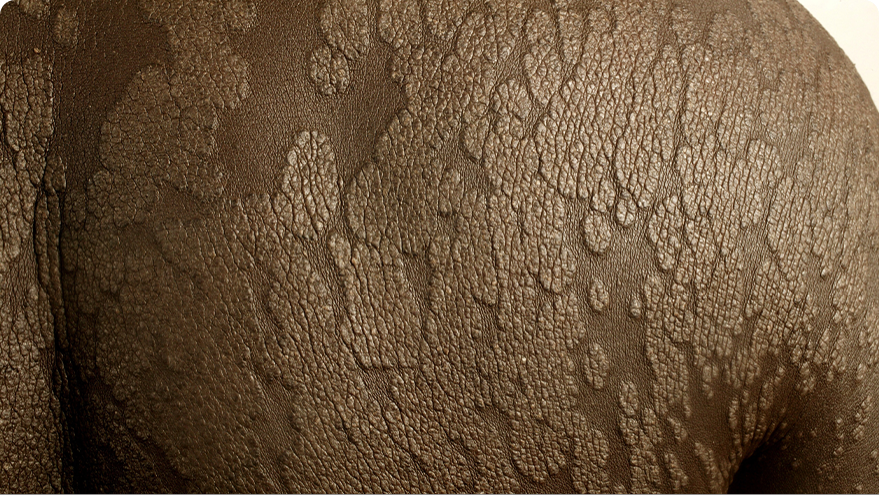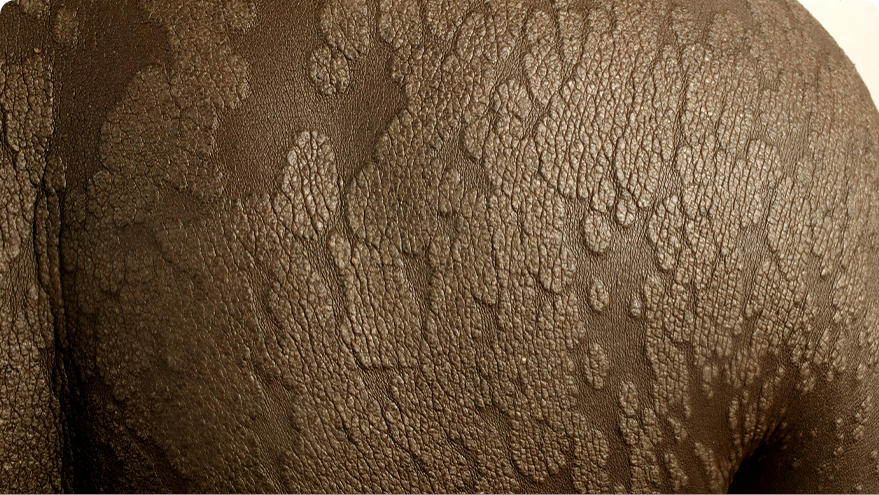DEFINED: The Psoriasis Area Severity Index or PASI is one tool dermatologists use to determine severity of psoriasis by assessing percentage of body surface area involved, intensity of redness, scaling, and thickness of disease on skin.
Understanding the severity of your psoriasis is one of the most important steps in your psoriasis journey. You will partner with your dermatologist, who will evaluate your severity by taking several factors into account, such as what percentage of your body is covered in plaques, to determine the severity of your psoriasis and develop a treatment plan.
Several factors go into determining whether your psoriasis is mild, moderate, or severe:
- Body surface area covered
- Intensity of symptoms
- Location of symptoms
- Personal impact






Remember—each case of psoriasis is unique, so giving your doctor the full story about the physical and personal impact will help them assess the severity of your condition.


Body Surface Area: The 1% Hand Test
One of the most important factors is how much of your body is covered by psoriasis. You can use your hand to estimate this. One hand covers roughly 1% of your body’s surface area.
.png)
Mild Psoriasis
less than
3%
Moderate Psoriasis
3%-10%
Severe Psoriasis
more than
10%
Intensity of Symptoms
Dermatologists will also look at the intensity of your symptoms to help determine severity. If your plaques and scales are especially thick, red, scaly, or itchy, that can contribute to your psoriasis being more severe.
Psoriasis Location
Having symptoms in places that have a greater impact on your life can also play a role in severity. For example, on your face where it can be more embarrassing, or in folds of your skin that are constantly irritated.
If you’re too embarrassed to discuss a certain location, try using our doctor appointment checklist. It contains important talking points, including location, that you can fill out and hand to your doctor.
Remember—without this information, your dermatologist won’t be getting the full story.



FACT: Need more proof psoriasis isn’t just a skin condition? Some people even experience psoriasis on their nails.
Personal Impact
The non-physical impact of psoriasis can also contribute to severity. This could include your emotional well-being, day-to-day activities, and relationships with others.

DIG DEEPER: Don’t be afraid to be honest when talking to your doctor—finding the right treatment plan can help in managing your psoriasis.





